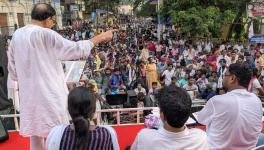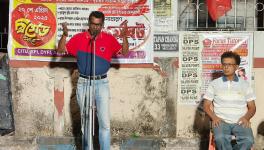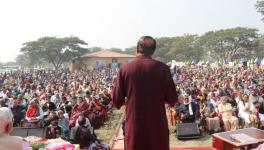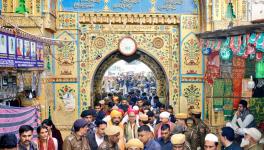Gyanvapi Case: Plea Before SC for Carbon Dating of “Shivling”
In new developments in the ongoing controversy surrounding the Gyanvapi mosque, seven Hindu women have now moved Supreme Court demanding carbon dating of the structure discovered during the video survey. The petitioners claim that this is a “Shiving”, and have also demanded a Ground Penetrating Radar (GPR) survey of the area.
According to Times of India, the women include an advocate, a professor and five social workers and are represented by advocate Vishnu Jain. They have sought directions from the Supreme Court to the Kashi Vishwanath Temple Trust to take over the “Shivling” and the adjacent area, claiming that the deity had dominion over five kos or 15 kilometers of peripheral land.
TOI quoted an excerpt from their petition: “The exact age and dimensions of the discovered Shivling could be ascertained only after its GPR survey and carbon dating by or under supervision of Archaeological Survey of India.”
This plea was moved on Sunday, July 17, while just two days before that on Friday July 15, another plea was moved before the Supreme Court, asking for permission to conduct prayers and religious rituals at the place where a “Shivling” was recently found on the mosque premises.
Rajesh Mani Tripathi, president of Krishna Janmabhoomi Mukti Dal, moved an application before the SC saying, “Applicant wishes to perform their religious practices as guaranteed under the Constitution of India, on the "Shiv Linga" found during the survey conducted in pursuance to the order passed by the concerned Court of Varanasi. It is a matter of record that the said "Shiv Linga" found during the survey has duly been protected vide the order passed by the concerned court.” The petitioner also claimed that though the “Shivling” is protected, so far, there is no restriction to devotees to offer prayers to it.
Readers would recall that during the video survey of the mosque premises, a structure had been found submerged in the Wazu Khana or ablution tank of the mosque in May. Even though the findings of the survey have still not been released, the lawyer for Hindu petitioners in the Shringar Gauri case had on May 16, a day before the deadline for the survey report to be submitted, informed the court that had ordered the survey that the structure was a “Shivling”, a symbol associated with the deity Shiva and considered holy by Hindus. The court of Civil Judge (Senior Division) had then ordered the area sealed.
However, Anjuman Intezamia Masjid (AIM) which is the mosque management authority, had rubbished these claims saying it was a part of a now defunct fountain, and not a “Shivling”. Two mahants associated with the Kashi Vishwanath temple had also debunked the “Shivling” claims.
The AIM moved an appeal against the order, but the Supreme Court on May 17, 2022, ordered to protect the area where the Shivling was found at Varanasi’s Gyanvapi mosque, without impeding Muslims’ right to enter the mosque and pray. The court subsequently transferred the matter pertaining to determining the maintainability of the suit, where five Hindu women had demanded the right to offer prayers at the Shringar Gauri temple. That case is being heard on a day-to-day basis at the district court in Varanasi.
Get the latest reports & analysis with people's perspective on Protests, movements & deep analytical videos, discussions of the current affairs in your Telegram app. Subscribe to NewsClick's Telegram channel & get Real-Time updates on stories, as they get published on our website.
























